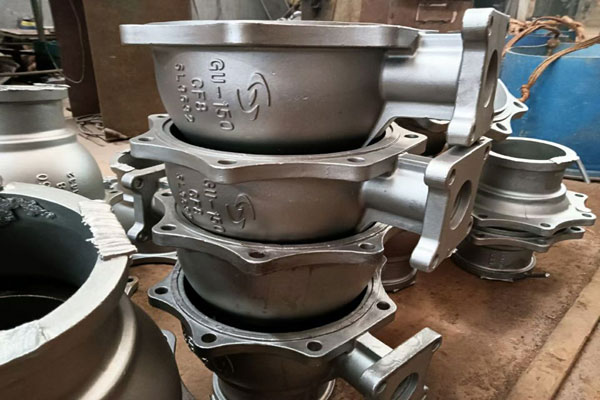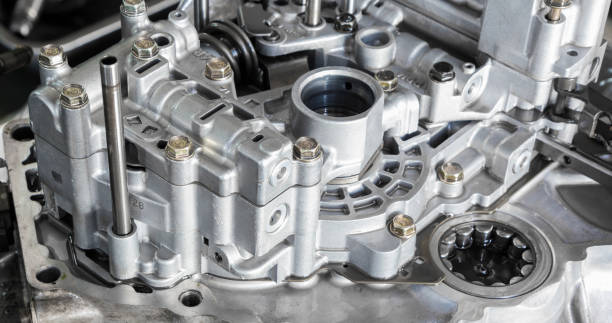How to Choose Stainless Steel Casting?
Stainless steel casting is also called stainless steel investment casting. It is a type of castings of using a silica sol process which is a casting process with little or no cutting. In the foundry industry, this is an excellent investment casting process technology. Its application is very wide and varied. It is not only suitable for casting of various types and various alloys, but also produces castings with higher dimensional accuracy and surface quality than other casting methods.
So now, you will ask, how many industries can the stainless steel casting be used in? How to choose the stainless steel casting grade as per its applications? Today, we will introduce it to you.

Stainless Steel Casting Foundry
At present, our company stainless steel casting Foundry products involve auto parts, mechanical parts, precision casting, stainless steel castings, pump and valve parts, construction hardware, petrochemical, kitchen hardware, bathroom hardware, medical equipment, sports equipment, and so on.
The materials involved are: 201, 202, 303, 304, 304L, 316, 316L, 1Cr18Ni9Ti, 430, 440, 2205, 17-4PH, 1008, 1020, 20NiCrMo, 42CrMo4 and non-magnetic stainless steel. The smallest casting currently produced weighs 2 grams. The largest casting weighs 30 kg. The minimum clearance of castings is 0.75mm. The casting is the thinnest 0.15mm; the longest blind hole (30mm in diameter) is 170mm in length.
When we choose Stainless Steel Casting,what factor should be considered?
1.Factor of Formability
Formability is the primary factor for stainless steel casting. The application of stainless steel castings requires good formability.
Austenitic stainless steel castings are usually formable. But Martensitic stainless steel castings of 410 tend to be brittle and are not readily formable. It should be avoided.
2.Factor of Welding
Welding stainless steel castings are very different than welding other steel castings. Compared to traditional welding. such as carbon steel casting. It’s more difficult to weld stainless steel. It also causes problems of intergranular corrosion, hot cracking, and stress corrosion cracking, and so on.
The most weldable stainless steels are typically in the austenitic group. Such as grades 304L or 347. In 347, it has niobium stabilizers added. It helps to deter intergranular corrosion.
Ferritic stainless steel castings such as grade 430 or grade 439 are also readily weldable. Duplex stainless steels also work well with welding.
Martensitic stainless steel castings are generally not suitable for welding. But, some martensitic stainless steel casting grades with lower amounts of carbon can be welded.
3.Factor of Post Machining
Since Special considerations will happen in stainless steel castings. A factor of Post Machining must be considered in stainless steel castings.
Most grades of stainless steel casting can be machining. But The machining process must be optimized to work at a rate that helps alleviate this issue. Like carbon steel castings, sulfur can be added to increase machinability.
Take grade 303 as an example, It is very like grade 304 except that sulfur has been added to it for machining purposes. Stainless steel casting is very susceptible to work hardening.
4. Factor of Corrosion Resistance environment
Although Stainless steel casting has strong corrosion-resistant properties. We have to check the type of using environment matches of their structure and application.
Different grades provide different corrosion resistance. Austenitic stainless steel castings generally provide the most corrosion resistance because of their high amounts of chromium.
For example, grade 304 is an excellent choice for corrosion resistance of stainless steel castings. Grade 316 stainless steel casting is like grade 304.
But it has molybdenum as part of its chemical makeup, further increasing its corrosion resistance. For example, If we are building an application that will be in a marine environment, then corrosion resistance is of the utmost importance.
While all stainless steels offer adequate anti-corrosion properties, 316 marine grade is better than others.
Ferritic stainless steel castings and martensitic are generally more affordable than austenitic stainless steel castings. Because they have less nickel and less chromium than austenitic stainless steel castings. It results in a loss of corrosion resistance.
Duplex stainless steel castings can be used to avoid the stress corrosion cracking associated with austenitic stainless steel castings.
5. Factor of Heat Treatment
For the stainless steel castings heat treatment, we should understand the effect of different grades of stainless steel casting after heat treatment.
For example, austenitic stainless steel castings and ferritic stainless steel castings are non-hardenable when heat treated. The heat-treatable stainless steel castings are typically martensitic or precipitation hardened. Such as grade 440C and 17-4 PH.
6. Factor of Strength
like grade 440C and grades 17-4 PH and 15-5 PH. They have high strengths. It can be achieved with martensitic and precipitation hardened stainless steel castings. Austenitic stainless steel castings, such as grade 316, can provide high strengths as well, though not as high as the martensitic grades.
Austenitic stainless steel castings also have more nickel than other stainless steel castings. So a grade like 316 will have greater toughness and ductility than ferritic and martensitic stainless steel castings.
Duplex stainless steel castings can provide ferritic stainless steel casting properties. But, it is still maintaining ductility and a toughness close to austenitic stainless steel castings.
In these years, certain grades have been developed with extremely high strengths. For example, when nickel gets added to stainless steel, it boosts the toughness and ductility. But for even greater strength, the martensitic and precipitation hardened stainless steel casting may be the right choice.
Conclusion
JC Casting Stainless Steel Foundry is one of the Chinese stainless steel casting companies with over 23 years’ exporting experience to Japan, the US, Canada, and United Kingdom, and so on. Whatever your application, we can supply stainless steel castings in a wide range of stainless steel grades. Our exporting performance has achieved great reputation from our overseas customers. Contact us today to learn how we can help your business succeed.

